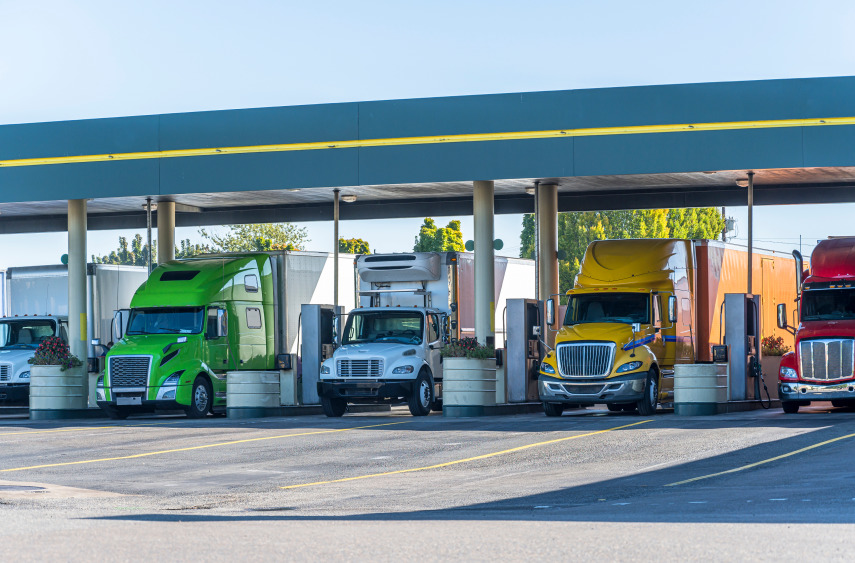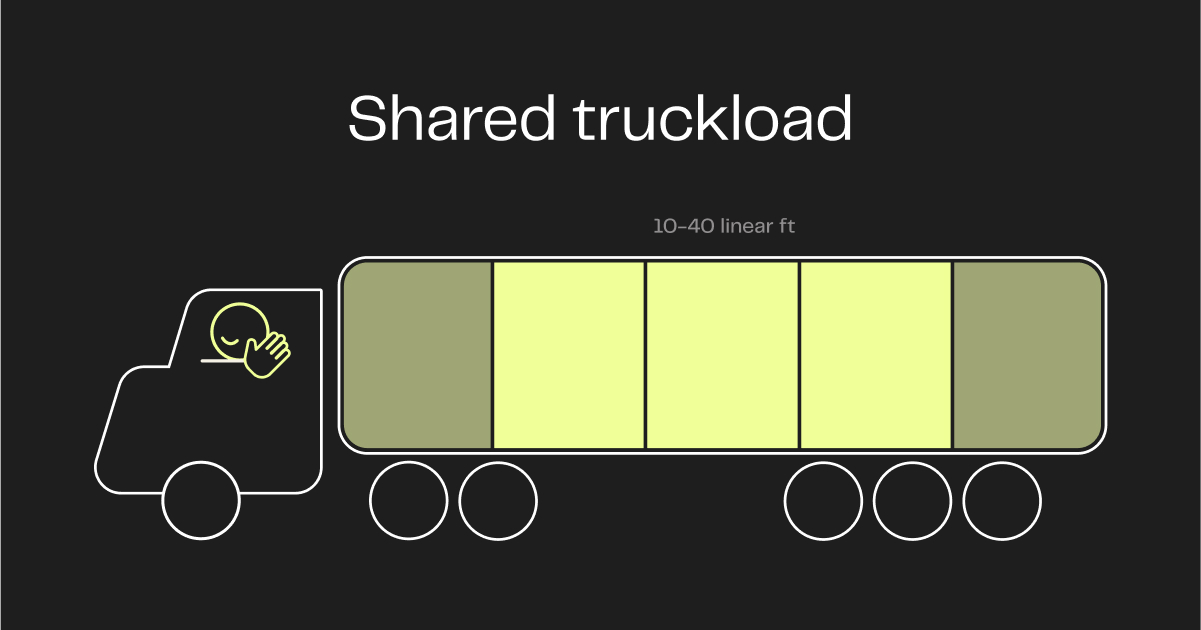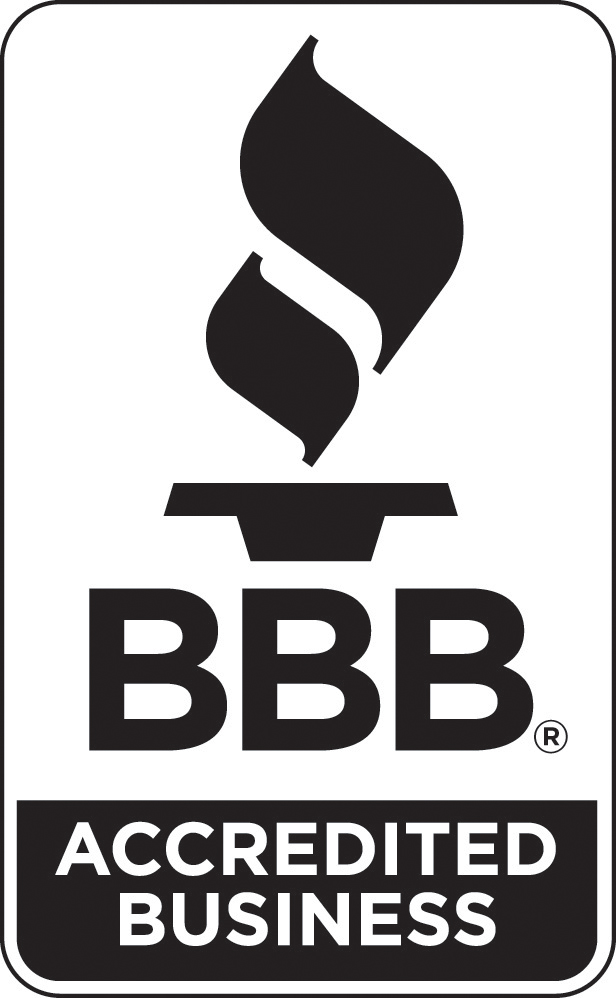Your Complete Guide to Trucking Rates

Freight carriers face a unique set of challenges. You want to stay competitive, but you also want the highest possible margins. You want to get your drivers moving, but you need to match them up with loads that are a good fit—and keep them happy with loads that pay well. The common denominator that can help you have it all? Finding the best trucking rates for your drivers and your business.
What’s the average trucking rate per mile?
Trucking rates per mile vary based on a number of factors—including gas prices, supply and demand, type of freight, mode, and distance. The latest national averages are:
- $2.41 per mile for vans. The highest rates are in the Midwest and the lowest in the Northeast.
- $2.74 per mile for reefers. The highest rates are in the Midwest and the lowest in the Southeast.
- $2.76 per mile for flatbeds. The highest rates are in the Midwest and the lowest in the West.
Truck rates have been on a decline over the past year and are expected to continue softening as imports slow, especially on the West Coast. While rates are still well above pre-pandemic levels, carriers will want to keep an eye on freight industry trends that may affect them.
How are trucking rates calculated?
Your rate is typically calculated on a per-mile basis, but beyond that, how freight rates are determined can vary widely depending on the following factors.
Base rate
Your base rate is your cost of doing business, this includes both fixed costs and variable costs. Fixed costs consist of what you pay each month no matter what, like insurance and equipment leases. Variable costs are what fluctuates based on how busy you are, like driver pay and gas. According to the latest data from the American Transportation Research Institute (ATRI), the average cost of trucking in 2021 was $1.855 per mile.
Distance
Distance is one of the most important factors in truck freight rates. A longer distance means a higher overall price for shippers due to fuel costs, driver wages, and equipment maintenance. However, carriers may earn more per mile for longer hauls since the shipping lanes often cross state lines and take longer to drive. Short-haul shipping lanes, on the other hand, are highly competitive and may have lower rates.
Available trucks and loads
Competition also plays a role in trucking rates. When the number of available trucks goes up, that means carriers are not as busy. It becomes a shippers’ market, and rates go down. As the number of loads goes up, carriers have more options to fill their trucks and shippers must compete for capacity. It becomes a carriers’ market, and rates go up.
Demand
High consumer demand means there is a lot of product to move. This is what often causes the number of loads, and therefore rates, to go up. Low demand—or shipping lane and supply chain issues that constrain supply—cause both the number of loads and rates to go down. Some demand is unpredictable, but seasonal changes play a part. For example, truck load rates go up during produce season in the spring and summer.
Weight
Like longer distances, a higher weight would mean higher costs for carriers. Weights are often tiered into six classes that determine the additional charges, from less than 500 pounds to more than 10,000 but less than 20,000 pounds. While additional weight means higher overall prices, the cost per hundred pounds shipped usually decreases as weight increases.
Freight class
The National Motor Freight Classification (NMFC) has created 18 freight classes based on density, handling, stowability, and liability. Density takes into account the weight of a load plus the amount of space it takes up: Heavy loads that fit in small spaces have lower rates because carriers can fit more on their trucks. Loads that are easy to handle and pack into a truck also have lower rates.
What type of freight pays the best rate?
Freight carriers spend plenty of time tracking the above factors and optimizing freight lanes in the quest for the best-paying freight loads. But there are a few specific types of freight that typically pay better than others.
Specialized freight
Specialized freight demands higher truck rates because it can’t be shipped in a basic box trailer or can’t be combined with other freight. Sometimes it requires special licensing, training, or equipment. It includes:
- Bulk liquids
- Gasoline
- Chemicals
- Other hazardous materials
- Refrigerated goods
- Oversized freight
- Livestock
Less than truckload
According to the ASTI report, LTL carriers generated the most revenue of all modes: an average of $402,239 per truck per year. That could be because LTL shipments include goods from multiple shippers and require more stops and handling. Truck drivers who are willing to put in the extra work are rewarded with higher rates.
Shared truckload
While LTL can be lucrative for carriers, multi-stop loads also pose risk of damage or delayed freight. Flock Freight’s shared truckload, pools freight on optimized, hubless routes. Our proprietary algorithms find and fill the empty spaces on trucks, helping you earn more per haul. Check out our STL earnings calculator to see how much more you could make—it could be as much as 20% per load.
How to earn the best trucking freight rates.
With so many variables in play, it can be hard to determine the best trucking rates. You likely turn to your load board for help, but Flock Freight takes it one step further. We’re better than a load board. With the Flock Platform, you can:
- search from thousands of available loads, including high-paying shared truckloads
- receive load recommendations tailored to your freight and lane preferences
- get priority access to the best-paying loads
- book instantly or submit a bid—choose the terms that fit your needs
Ready to earn more and wait less? Sign up today and start booking in as little as 30 minutes—because we know you don’t have any time to waste.





